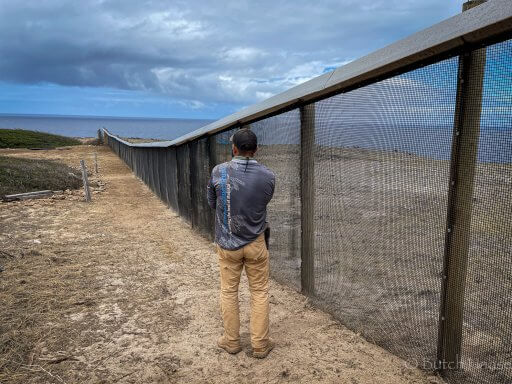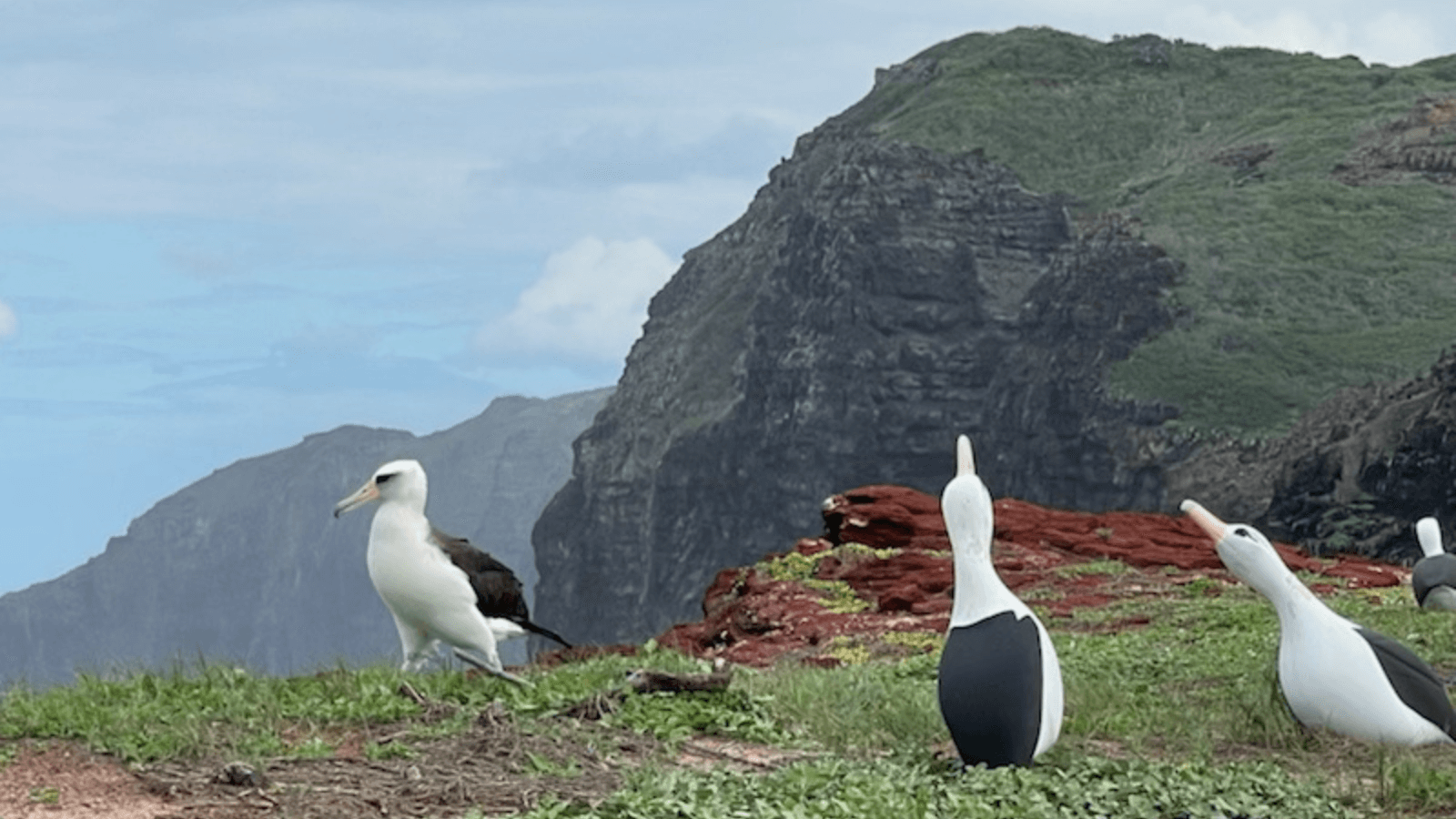 The completed Mokio Preserve predator-proof fence, photograph by Butch Haase, Moloka'i Land Trust
The completed Mokio Preserve predator-proof fence, photograph by Butch Haase, Moloka'i Land Trust
The American Bird Conservancy and the Moloka‘i Land Trust have announced completion of a 1.7-km -long predator-proof fence at the Mokio Preserve on the Hawaiian island of Molokai this month, well in time for yesterday's World Albatross Day. “Vulnerable seabirds, including the Laysan (Mōlī) and Black-footed Albatross (Ka‘upu), will have a chance to replenish their populations inside the nearly 100-acre [40-ha] elevated wildlife sanctuary, safe from sea level rise and invasive predators that prey upon their breeding colonies.
“We've already begun seeing benefits from the newly installed fence, including Wedge-tailed Shearwater (‘Ua'u Kani) chicks this year, compared to previous years when all chicks were lost to mongoose predation. Through social attraction and active translocation methods, we hope to establish species that are losing their nesting sites due to sea level rise in the Northwest Hawaiian Islands, such as Laysan and Black-footed Albatrosses, Bonin Petrels (Nunulu), and Tristram's Storm-Petrels (Akihikeʻehiʻale).”
Construction of the predator-proof fence began in August 2020. Even before the fence was completed, several Laysan Albatrosses and one Black-footed Albatross have been documented at the site, responding to a solar-powered system that broadcasts albatross sounds and decoy albatross models.

A Laysan Albatross visits the decoys within the newly fenced area, photograph by Butch Haase, Moloka'i Land Trust
“The conservation fence at Mokio Preserve will cause a cascade of positive ecological impacts. Increased numbers of nesting seabirds will bring marine-derived nutrients to the land and nearshore areas in the form of guano. This will in turn provide nutrients to coastal plants which will create more habitat for native insects.”
The Mokio fence is an of upgraded design providing superior saltwater corrosion resistance. “Replacing an old deer fence that enabled the restoration of native vegetation, the new predator-proof fence will facilitate a more comprehensive recovery by keeping out small rodents that wreak havoc on native plants and nests, in addition to the cats and mongoose that prey on seabirds. Gates allow human access for research”.
 Another view of the completed fence, photograph by Butch Haase, Moloka'i Land Trust
Another view of the completed fence, photograph by Butch Haase, Moloka'i Land Trust
Access earlier articles in ACAP Latest News on the Mokio Preserve and its predator-proof fence here.
John Cooper, Emeritus Information Officer, Agreement on the Conservation of Albatrosses and Petrels, 20 June 2024

 Español
Español  English
English  Français
Français